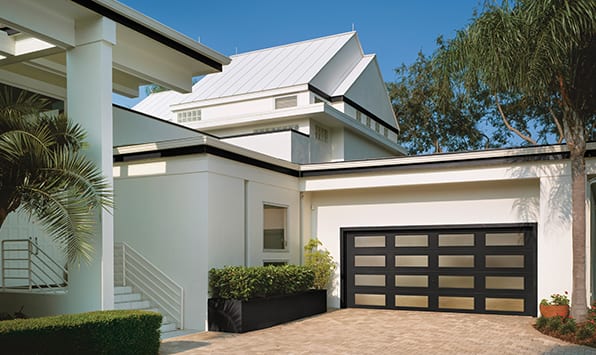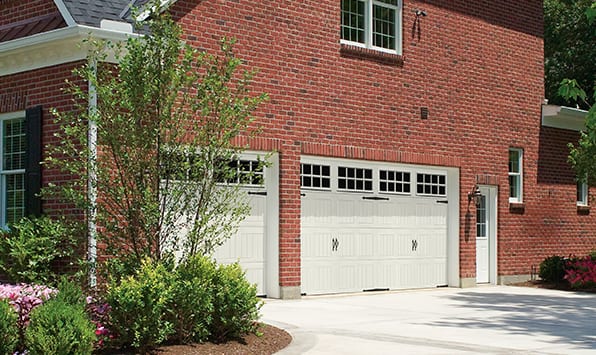An overhead garage door is one of the most crucial features of your home. It provides security, enhances curb appeal, and ensures convenient access to your garage with a single button push. Always remember, maybe you are using many smart features in overhead garage doors, but like any other mechanical system, they are prone to wear and tear over time. From doors that won’t open and doing noisy operations to misaligned tracks, many minor and major problems can quickly become a major inconvenience.
What is the good news? The experts at Steel City Garage Doors can resolve all these problems with their expert craftsmanship. In this guide, we will walk you through the most frequently asked questions of homeowners. We are going to describe to you the step-by-step overhead door repair and troubleshooting tips while explaining when it’s time to call the overhead garage door company professionals.
Why Overhead Garage Door Maintenance Matters
An overhead garage door is more than just a moving panel. It’s a complex system created by installing springs, cables, rollers and tracks along with an opener mechanism. Each component works together and ensures smooth and safe operations. The neglected small issues can lead to bigger, costlier repairs. The proper troubleshooting and timely fix not only save money but also extend the life of your garage door systems.
Common Overhead Garage Door Problems & How to Troubleshoot
For analyzing the accurate time for overhead garage door repair, you have to know the common problems that you are going to face. Here are the eight problems that every garage door owner is going to face.
1. Garage Door Won’t Open or Close
The possible causes of your garage door not opening and closing are here.
- There is a disruption in the powersources.
- Misaligned sensors.
- There might be broken torsion and extension springs.
- Some issues are linked to remote control or battery outage.
- Overhead garage door opener malfunction.
Troubleshooting Tips:
- Start by checking if the opener is plugged in or seeing whether there are any signs of a circuit breaker or not.
- Please examine the photo eye sensors located near the floor, clean them if they are dusty, and ensure they are properly aligned.
- Try to operate the door with the wall switch instead of the remote.
- If the opener motor is running but the door still doesn’t move, a broken spring or disconnected cable might be the culprit.
- If your garage door status is unchanged after trying these tips, it’s time to call a pro to fix it.
2. Garage Door Is Stuck in the Midway
Here are the possible causes your garage door is stuck midway or opens unevenly.
- Garage doors frequently become stuck due to track misalignment.
- You may find a broken roller in the track.
- Damaged cables and disconnection might also be the culprit
- Track obstructions frequently result in your garage door becoming stuck halfway.
Troubleshooting Tips:
- Examine the garage door tracks and other overhead garage door parts linked with tracks for finding the indications of bending, dents, or discarded debris.
- Ensure that the loose bolts and brackets, which hold the tracks in place, are tightened. If there are any issues with the tracks, the garage door may become stuck halfway.
- Replace the worn-out rollers with steel and nylon options.
- If the cables look fried and broken, avoid touching them; hence, they perform under extreme tension without the help of trained technicians.
- Replacing worn-out rollers with nylon or steel is going to resolve your problem.
3. Loud with Grinding Noises
Here are the possible causes of loud and grinding noises coming from the garage doors.
- Lack of lubrication is often the cause of the loud and grinding noises.
- Worn and damaged rollers cause disruption.
- Loose hardware and motor issues are often the causes of the garage door grinding noises.
Troubleshooting Tips:
- Apply garage door-specific lubricant to the springs, hinges, and rollers.
- Try to replace old metal rollers with the quieter nylon ones.
- Tighten the screws, nuts, and bolts on the door hardware.
- If the motor is the source of noise, the overhead door Pittsburgh company professional’s inspections are also recommended.
4. Your Garage Door Start To Move Too Quickly
Here are the possible causes of a garage door moving quickly.
- Broke the tension or extension springs.
- Damaged or torn cables can lead to disconnections.
Troubleshooting Tips:
- If you want to repair it, you have to contact the professionals by calling the (412) 504-7100 number to troubleshoot the errors.
- A malfunctioning or damaged spring is serious technical damage; don’t try to repair the garage door spring yourselves; it’s always better to call the garage door expert.
- Garage door springs are performing under heavy tension; if you try to handle them without professional hands, there is a chance of physical damage.
5. Remote Control or Keypad Not Working
Here are the possible causes for which the remote control and keypad are not working.
- Possible causes include dead batteries and a malfunctioning remote.
- Signal interference or battery is drained.
- There is a programming error.
- Remote control issues often correlate with malfunctioning opener receivers.
Troubleshooting Tips:
- Replacing the batteries in the remote and then checking the keypad wiring.
- Try to reprogram the opener following the manufacturer’s instructions.
- Remove all the potential sources of the interference, like LED bulbs and all nearby electronic devices.
- Even after applying all these tips, the opener will still receive professional servicing.
6. Garage Door Reverses Before Closing
Here are the possible causes of a sudden reversal of the garage door before closing.
- The main reason can be misaligned or dirty safety sensors.
- Travel limit settings on the opener need little adjustment.
- There is an obstruction in the door’s path and a blockage in the garage door track.
Troubleshooting Tips:
- Wipe off the sensor with a clean cloth and verify that they are aligned with each other.
- Adjust the opener’s travel and force settings as per the manual’s position.
- Inspect the areas for the small objects that are blocking the door’s path.
7. Sagging Out or Off-Balance Door
Here are the possible causes of a sagging and off-balance door.
- A worn-out or rusted spring is often the cause of a sagging and off-balance door.
- Overhead garage door springs can break due to uneven tension in the system.
- It can cause structural damage to panels.
Troubleshooting Tips:
- Disconnecting the opener and manually lifting often can resolve the error; you can try this method.
- If it doesn’t stay in place, the springs are going to need little adjustments and replacement.
- A professional technician should always handle the spring balance and other safety concerns because unprofessional handling of springs can cause serious health injuries.
8. Door Moves Slowly
Are you experiencing problems with slow-moving doors? Here are the reasons why your garage door may move slowly and make sounds while operating.
- Extended and extensive use can wear out the opener motor.
- Poor lubrication and deposits of rust and debris often might be reasons for a slow-moving overhead garage door.
- Incorrect speed settings can also be the reason for a slow-functioning door.
Troubleshooting Tips:
- First, lubricate the moving parts and check the opener’s speed control for any deposits of debris.
- Even after the cleaning, if the problem still occurs, then we must say this is the right time to call the professionals for seeking help regarding garage door repair or replacements.
Simple Maintenance Tips for Overhead Garage Doors
Regular maintenance is always preferable to complete replacements. If you continue to experience the same problem despite regular maintenance, then garage door replacement is the final option, and it’s time to call the garage door experts.
| Monthly Inspection | This inspection can be done by property owners or garage door experts. Check the rollers, springs, and cables for wear and tear. |
| Regular Lubrication | Dry garage door tracks and hardware often cause problems. Try to lubricate the garage door moving parts about every 3–4 months. |
| Review the Safety Features | Ensure the garage door’s auto-reverse sensors are working properly and verify the settings of the overhead garage door. |
| Remove Dirt & Debris From Tracks | Remove all the dirt, dust, and debris, which might be the cause of uneven movements. |
| Check the Balance of the Door | Disconnect the opener, then manually lift the door to determine whether it remains halfway open or not. If it’s not open in this position, that means your garage door needs adjustments. |
When to Call a Professional
DIY repairs might be tempting but some repairs can be taken care of by DIY techniques. For a safe and efficient outcome, it’s always better to hire experts in garage door repair and resolve the problems. Here are some of the errors where DIY garage door repairs are almost useless.
- Broken or damaged torsion and extension springs
- Frayed, broken and torn cables
- You observe some signs of bent and damaged tracks
- Opener is not working and its motor failed
- Repeated door turnaround regardless of troubleshooting
A trained technician has the right tool and expertise to handle these dangerous repairs safely. You can contact the Steel City Garage door experts to handle the following problems.
In Conclusion
An overhead garage door is a crucial component of your home’s convenience, safety, and curb appeal. With a bit of straightforward troubleshooting, experts can tackle issues like noisy rollers and misaligned sensors. However, they should also be prepared to deal with more serious problems, such as broken springs and malfunctioning openers. If you are not a professional garage door expert, then it’s always better to ask for help from the professionals to avoid the chance of sudden body injury.




